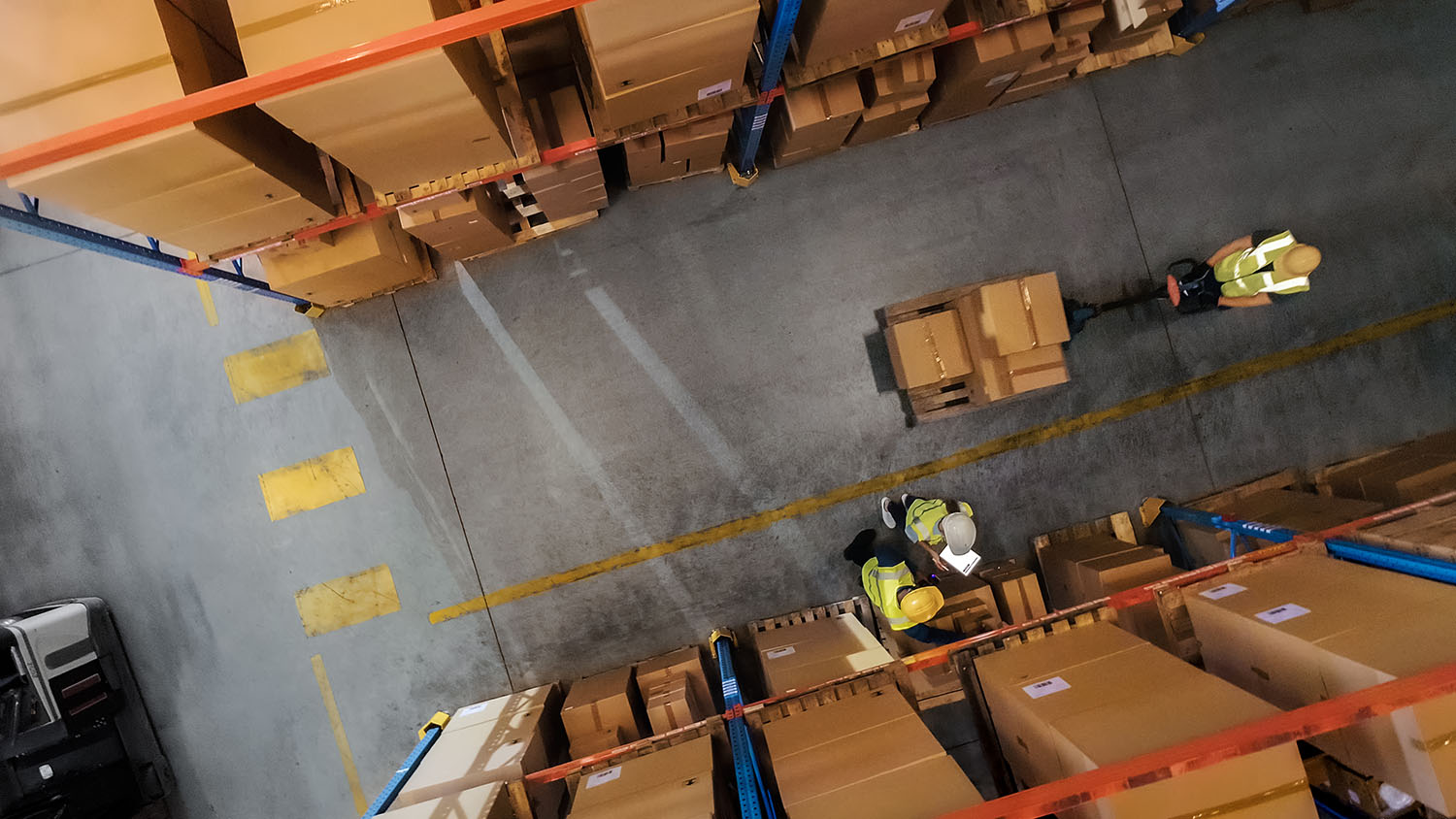Manually handling billing when you’re a 3PL is like trying to navigate a warehouse you just walked into. It is confusing, time-consuming, and error-producing.
3PLs are serving multiple clients. They offer different services to each client according to fluctuating pricing structures. Billing them for services can quickly become a logistical nightmare that harms margins and damages client trust.
That’s where automation comes in.
A Warehouse Management System (WMS) that is advanced enough for accurate, real-time tracking of billable activities can transform billing for a 3PL from a margin-killer to a strength.. The shift to the right WMS for automated billing can eliminate manual errors, streamline invoicing, optimize revenue management, and improve transparency for clients.
In this article, we’ll break down everything you need to know about 3PL billing automation, why it matters, and how a WMS can help you stay ahead in a competitive market.
.
What is 3PL Billing?
3PL billing is the process of charging clients for the various logistics services a third-party logistics provider offers. 3PL companies provide more services than public or contract warehouses, including order fulfillment, transportation, inventory management, kitting, and value-added services.
Value-added services are those that go beyond standard receiving, storage, and shipping. They need to be tracked and billed because they can be time-intensive. Each of these unique services comes with a unique pricing structure, meaning billing that client can get complex.
“If Nordstrom is a client of my 3PL and I receive inventory from their supplier that my team has to place a price tag on,” says Don White, Senior Director of Solutions Engineering for Da Vinci, “that’s not a traditional warehouse transaction. But it’s definitely something you want to measure.” 3PLs often provide that kind of specialized handling that adds significant value for retailers and needs to be billed.
Why Else Is 3PL Billing More Complex Than Standard Warehouse Billing?
Unlike contract or public warehouses that charge simple storage fees, 3PL providers must account for multiple variables when invoicing clients. Some factors that make 3PL billing more complicated include:
- Different pricing models: 3PLs charge clients based on storage space, handling fees, order volumes, weight, SKU complexity, and customized service levels, leading to unique rates for each customer.
- Frequent rate changes: Pricing may fluctuate depending on seasonal demand, contract terms, or additional services requested, making manual tracking inefficient and almost impossible.
- Multiple billable services: In addition to storage, other services such as picking, packing, returns processing, labeling, and freight services also need to be accurately recorded and billed.
- High transaction volumes: With hundreds or thousands of orders processed daily, manual billing can lead to costly errors, delays, and revenue leakage.
Because of these complex variables, many 3PLs struggle with billing accuracy, invoicing delays, and client disputes, which ultimately impact profitability.
The Challenges of 3PL Billing
Billing in 3PL operations presents several challenges that can impact efficiency and profitability. Manual billing processes are particularly susceptible to errors and inefficiencies due to the complex nature of a 3PL’s value-added services. But even when billing is automated through a WMS, things can go wrong if the 3PL’s particular warehouse management system lacks key features like real-time tracking.
Here are some key challenges of manual 3PL billing:
Accuracy and Error Rates
Manual data entry and calculations are prone to errors, leading to discrepancies in invoices. These errors can result in overbilling, underbilling, or mismatched charges, affecting client trust and financial accuracy.
Time-Consuming Processes
Generating invoices manually is time-consuming, involving multiple steps from data collection to verification. This can lead to delays in billing cycles, affecting cash flow and revenue recognition. This process can take multiple days to weeks, leading to delayed billing cycles and more time spent managing client’s disputes over billing mistakes.
Resource Intensive
Manual billing requires significant administrative effort, diverting resources from more strategic tasks. This can increase operational costs and reduce overall efficiency, as employees spend far more time on billing than on other warehouse operations.
Here are some key challenges of 3PL billing without real-time tracking:
Scalability Issues
As a 3PL provider grows, the volume and complexity of billing increases. WMS-driven workflows without real-time functionality can struggle to keep pace with this growth, leading to potential bottlenecks and scalability challenges. Without real-time visibility or a robust WMS, warehouse managers:
- Can’t efficiently reassign labor when unexpected volume spikes occur,
- Can’t accommodate the specialized requirements of new enterprise clients
- Can’t optimize warehouse space and labor
- Can’t connect through modern APIs with client systems an ERP or e-commerce platform
- Can’t make data-driven decisions about informed decisions about facility expansion, equipment investment, and staffing, instead relying on error-prone gut instincts.
Lack of Billing Transparency
Without the real-time tracking provided by an advanced WMS, clients can question how fees are calculated, leading to disputes and delayed payments. Issues like vague pricing breakdowns, discrepancies between expected and actual charges, and lack of automated audit trails can arise if there’s no billing transparency.
Revenue Leakage
Without real-time labor tracking, automated charge capture, and exception flagging features in their WMS, 3PLs risk failure at capturing all the value they provide clients. For instance, a WMS lacking barcode validation might miss capturing 50 carton relabeling tasks per day at $0.50 each, resulting in $12,500 of unbilled services annually. Similarly, without system-enforced minimum charges, a 3PL might consistently undercharge small orders that actually cost more to process than the standard rate covers.
How Does an Advanced WMS Automate 3PL Billing?
A robust WMS automates 3PL billing by tracking billable activities in real time, so there is no need for workarounds or manual input. This reduces errors and makes invoicing simpler. Here’s how it works:
- Automatic data capture: A WMS logs every billable action (storage, picking, packing, shipping, returns) without manual input.
- Real-time rate application: It applies custom pricing rules instantly, ensuring accurate charges based on agreed rates for each client.
- Integrated invoicing: The system automatically generates invoices, removing the need for manual calculations and reducing processing time.
- Error reduction & transparency: Detailed service logs and audit trails reduce or eliminate disputes as clients can easily verify charges.
- Scalability: As your 3PL business grows and you gain more clients, a WMS handles increasing transaction volumes effortlessly and processes billing on a larger scale seamlessly.
Potential Benefits of Using a WMS to Automate 3PL Billing
Here are some key benefits of using a WMS to automate your billing processes.
Enhanced Accuracy
Manual data entry and calculations often lead to discrepancies, which can be costly and time-consuming to rectify. A WMS ensures that billing data is captured, reducing billing errors such as double billing, incorrect rate application, or missed charges. By automating these processes, 3PL providers can ensure that invoices are precise, reducing disputes and improving client satisfaction.
Efficiency and Time Savings
Manual billing is labor-intensive, requiring multiple steps from data collection to verification and invoice generation. A WMS can automate these steps, speeding up the billing cycle and reducing the need for extensive administrative labor. This efficiency not only accelerates cash flow but also allows staff to focus on more strategic activities.
Improved Revenue Management
A WMS with real-time data and analytics supports quick adjustments to pricing strategies based. For example, if storage costs increase, the system can automatically adjust billing rates to reflect these changes, ensuring that revenue targets are met. Improved revenue management helps maintain profitability and support business growth.
Examples of Automation in 3PL Billing Software
Here are some practical examples of automation in 3PL billing.
Activity-Based Billing
By monitoring actions such as picking, packing, and shipping, a WMS can generate detailed invoices that reflect the exact services provided—AKA “activity based.”
Example: A 3PL provider managing e-commerce fulfillment uses a WMS to track each pick-and-pack action. Clients are automatically billed per order fulfilled and have real-time visibility into their service costs.
Storage Billing
A WMS can track inventory locations and storage durations, automatically calculating charges based on predefined rates to simplify billing for both short-term and long-term storage. Additionally, automated storage billing helps 3PL providers optimize space usage, as they can easily identify and manage underutilized or overutilized storage areas.
Example: A fashion retailer using a 3PL warehouse for seasonal inventory storage is charged differently as stock levels increase before peak season and decrease after. The WMS ensures automated billing adjustments, preventing overcharges or manual corrections.
Value-Added Services (VAS) Billing
Many 3PLs offer additional services, such as kitting, assembly, relabeling, returns processing, or quality checks. A WMS automatically tracks each of these services and applies relevant charges per transaction.
Example: A cosmetics brand requests custom gift wrapping for holiday orders. The WMS logs each wrapping service performed and automatically adds the correct fee to the client’s invoice.
Freight & Transportation Billing
For 3PLs handling transportation or last-mile delivery, a WMS integrates with Transportation Management Systems (TMS) to ensure accurate freight billing based on factors like weight, distance, and carrier fees.
Example: A 3PL coordinating same-day deliveries for an electronics retailer automatically bills clients per delivery stop using real-time data from the TMS, reducing manual invoice adjustments.
Subscription-Based Billing (for Long-Term Clients)
For 3PL clients with fixed monthly storage and service contracts, a WMS can automate recurring billing while tracking any overages (e.g., extra storage or additional handling).
Example: A B2B supplier has a long-term storage contract with a 3PL, paying a fixed monthly fee for 100 pallets. If inventory exceeds this limit, the WMS automatically bills for the additional pallets used without manual adjustments.
How to Choose the Right WMS for 3PL Billing
Selecting the right Warehouse Management System (WMS) to handle 3PL billing is important, and here are five key factors to consider:
Comprehensive and Flexible Billing Capabilities
Your WMS should support activity-based, storage, and value-added service (VAS) billing while allowing custom rate structures for different clients. Look for features like automated charge tracking, tiered pricing, and contract-based rates to ensure accurate and transparent invoicing.
Seamless Integration With Accounting and TMS
A WMS must integrate with accounting software (QuickBooks, NetSuite, SAP) for smooth financial reporting and invoicing. It should also sync with a Transportation Management System (TMS) to capture freight charges and provide end-to-end cost visibility.
Automated Invoicing and Error Prevention
Billing automation removes manual calculations. Choose a WMS that auto-generates invoices, validates charges in real time, and provides audit trails to reduce disputes and ensure accurate revenue collection.
Scalability and Cloud Accessibility
A scalable, cloud-based WMS allows easy expansion across multiple locations, allowing real-time access to billing data. It should handle high order volumes, multiple clients, and complex pricing structures without performance issues.
Thorough Reporting and Client Transparency
A strong WMS should provide detailed billing reports, cost breakdowns, and real-time client access to invoices via a portal. This improves financial decision-making, enhances customer trust, and reduces billing disputes.
Take Control of Your 3PL Billing With Da Vinci WMS
The Da Vinci Unified WMS is cloud-based and offers real-life 3PL billing features including labor tracking, automated charge capture, and exception flagging. Consider Da Vinci Unified WMS for your 3PL warehouse operations if multi-client billing has been a persistent time-waster or frustration for your teams. Request a demo and see how our WMS, known for its billing functionalities, can improve your 3PL’s margins.



